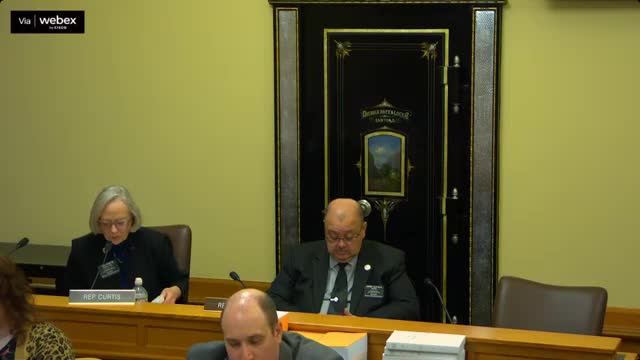Kansas faces veterinarian shortage as demand rises in rural and urban areas
January 16, 2025 | Agriculture and Natural Resources Budget, Standing, HOUSE OF REPRESENTATIVES, Committees, Legislative, Kansas
This article was created by AI summarizing key points discussed. AI makes mistakes, so for full details and context, please refer to the video of the full meeting. Please report any errors so we can fix them. Report an error »

The House Committee on Agriculture and Natural Resources convened on January 16, 2025, to discuss critical issues regarding the veterinary workforce in Kansas. A significant focus of the meeting was the distribution of veterinarians across the state and whether current numbers meet the growing demand, particularly in rural areas.
Committee members expressed concerns about the concentration of veterinarians in urban areas, notably Johnson County, which has the highest number at 396. This raises questions about accessibility to veterinary services in less populated regions. Discussions highlighted the need for scholarship programs to encourage veterinary students to practice in rural counties, where services are often lacking.
The committee learned that the Kansas veterinary school graduates approximately 120 veterinarians annually. However, there is a challenge in retaining these professionals within the state, especially as many graduates come from out of state. Efforts are underway to balance the number of in-state and out-of-state students to ensure a steady influx of veterinarians who are likely to remain in Kansas after graduation.
Another topic addressed was the issue of disease transmission from animals to humans. While there are concerns about zoonotic diseases, the board reported that complaints in this area are minimal. Most complaints received are related to veterinary services or unlicensed practice rather than disease transmission.
The meeting concluded with a discussion on the role of veterinarians in large agricultural operations, such as feed yards and dairies. It was clarified that while some veterinarians work as consultants for these operations, they may not be included in the state’s veterinarian count if they do not reside or practice in Kansas.
Overall, the committee acknowledged the importance of addressing the veterinary workforce distribution and the need for ongoing efforts to ensure that all areas of Kansas have adequate access to veterinary care.
Committee members expressed concerns about the concentration of veterinarians in urban areas, notably Johnson County, which has the highest number at 396. This raises questions about accessibility to veterinary services in less populated regions. Discussions highlighted the need for scholarship programs to encourage veterinary students to practice in rural counties, where services are often lacking.
The committee learned that the Kansas veterinary school graduates approximately 120 veterinarians annually. However, there is a challenge in retaining these professionals within the state, especially as many graduates come from out of state. Efforts are underway to balance the number of in-state and out-of-state students to ensure a steady influx of veterinarians who are likely to remain in Kansas after graduation.
Another topic addressed was the issue of disease transmission from animals to humans. While there are concerns about zoonotic diseases, the board reported that complaints in this area are minimal. Most complaints received are related to veterinary services or unlicensed practice rather than disease transmission.
The meeting concluded with a discussion on the role of veterinarians in large agricultural operations, such as feed yards and dairies. It was clarified that while some veterinarians work as consultants for these operations, they may not be included in the state’s veterinarian count if they do not reside or practice in Kansas.
Overall, the committee acknowledged the importance of addressing the veterinary workforce distribution and the need for ongoing efforts to ensure that all areas of Kansas have adequate access to veterinary care.
View full meeting
This article is based on a recent meeting—watch the full video and explore the complete transcript for deeper insights into the discussion.
View full meeting
